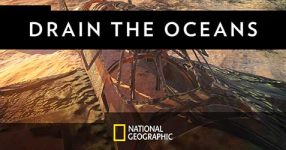Humankind’s enduring journey spans thousands of years, with ships serving as vital conduits for global commerce, transporting over ninety percent of goods. This documentary, titled “Sunken Eldorado: The New Underwater Gold Rush?” delves into the perils faced by seafarers and the colossal wealth lost to the depths of the ocean. Until the mid-20th century, predicting oceanic weather was fraught with challenges, leading to billions of dollars in sunken treasures. Today, a modern gold rush unfolds beneath the waves, where treasure hunters and investors seek fortunes from the shipwrecks that dot the ocean floor.
The Deep Sea’s El Dorado:
Beneath the ocean’s surface lies an El Dorado of unimaginable wealth, surpassing even the reserves of the Bank of Madrid. “Sunken Eldorado” captures the emergence of a new gold rush, as treasure hunters and investors collaborate, tirelessly pursuing leads to unlock the treasures hidden in the depths. However, this pursuit is not without consequences. Shipwrecks, once repositories of our collective heritage, have become strategic targets, leading to clashes between treasure hunters and advocates for historical preservation. The documentary warns of a potential erasure of ancient hard drives, leaving future generations with a flat-line legacy.
Unraveling the Mystery of Shipwrecks:
Accidents in maritime transport, whether due to human error, technical glitches, or weather conditions, have been a persistent reality. The true magnitude of ship losses remains elusive, with estimates suggesting millions of shipwrecks lying dormant in the ocean depths. UNESCO’s initiative to map the entire ocean floor reveals an approximation of three million shipwrecks globally. Yet, underwater archaeologists argue that this is a conservative estimate, given the vast unexplored expanses. The documentary poses the question of what lies undiscovered in the uncharted depths, considering that less than five percent of the planet’s oceans have been explored.
The South China Sea: A Hotbed of Shipwrecks:
The allure of potential shipwrecks is particularly intriguing in the South China Sea, a mythical crossroads between the Pacific and Indian Oceans. “Sunken Eldorado” narrates the bustling Strait of Malacca’s history, the world’s busiest shipping channel. British Captain Michael Hatcher’s journey in Singapore serves as a captivating example. Starting with salvaging steel, he stumbled upon the Nanking, a shipwreck from 1750, yielding an unprecedented amount of Chinese porcelain and turning into a multimillion-dollar jackpot.
Balancing Treasure Hunting and Cargo Recovery:
Whether labeled as treasure hunters or cargo recoverers, explorers are drawn to the deep seas, inspired by success stories like Hatcher’s. However, the journey doesn’t conclude with discovery. Shipwrecks must be located, facilitated by evolving technologies like underwater vehicles, robotics, and sensor technology. The ethical conundrum arises in the collaboration between private companies and the public sector in locating and preserving shipwrecks. The clash between commercial interests, historical preservation, and academic knowledge preservation poses a significant challenge for underwater exploration.
Controversies Surrounding Recovery Operations:
Controversies escalate when financing recovery operations becomes a focal point. Odyssey’s successful salvage of gold and silver from the Spanish frigate Nuestra Señora de las Mercedes exemplifies the tensions between commercial interests and heritage preservation. The UNESCO convention emphasizing in-situ preservation clashes with the financial needs of governments and private companies. The debate intensifies as shipwrecks become geopolitical hotspots, and governments seek to control strategic passages.
Impact on Local Economies and Environmental Consequences:
The allure of shipwrecks has not escaped local fishermen, leading to looting and destruction. The black market, coupled with geopolitical battles, complicates the fate of underwater treasures. Additionally, the environmental impact of deep-sea fishing, offshore exploration, and underwater cables threatens to erase all shipwrecks within the next 30 years. As technological advancements progress, these relics of the past are at the mercy of time, both natural and man-made.
In uncovering the intricate world of underwater treasures, “Sunken Eldorado: The New Underwater Gold Rush?” exposes the delicate balance between commercial interests, heritage preservation, and environmental sustainability. The race to uncover sunken wealth beneath the waves is not just a quest for gold; it is a profound exploration of our shared history and the ethical challenges we face in the pursuit of the treasures that lie in the depths of our oceans.












